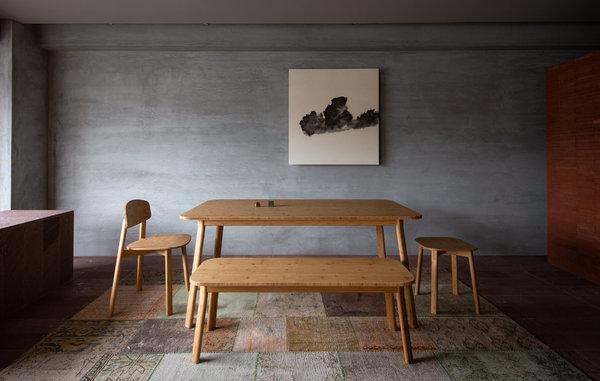It’s no secret that so-called PoMo revival — a rebound in taste for the audaciously Postmodern — is raging in the world of Western design. You might find these pieces dotting the trendy boutiques of the Lower East Side, or in the accessories assortment of hip brands like Hay.
But for a certain sect of designers, more is not necessarily better. Many are turning instead to a more subtle aesthetic that has been humming along quietly in the background. That is, to the design culture of Japan, whose influence has surfaced in Western interiors and art off and on since the mid-19th century.
But don’t confuse Japanese style with minimalism, says Yuka Morihata. Ms. Morihata and her husband, Kaz, run the Philadelphia boutique Rikumo, which sells Japanese home goods. “To me, Japanese style is characterized by its thoroughness, its human-centric approach, and its reverence for nature,” she said.

Kohchosai Kosuga, a manufacturer of bamboo accessories for more than a century, commissioned the Copenhagen-based OEO Studio to design these Scandinavian-inflected BMBU furnishings. Prices start at 36,000 yen, or about $320; available at Kohchosai in Osaka and Kyoto; oeo.dk.CreditFukumori Kunihiro
Time is also of the essence. The novelist Junichiro Tanizaki made that point in his treatise on Japanese aesthetics, “In Praise of Shadows.” In Japan, he wrote, patina wins out over gleam. The new, the unblemished and the perfect are not necessarily important.
Whether it’s because of a sentimental shift, or just greater ecological awareness, heirlooms seem to be having a moment. Naoko Takei Moore, who runs Toiro, a Japanese cookware store in Los Angeles, is leaning into her clients’ taste for the timeless, offering the sturdy, unfussy earthenware pots known as donabe and slick glasses by Hirota, a fourth-generation manufacturer in Tokyo. “Everything is meant for everyday use, and for a long time,” she said.
The textile artist Hiroko Takeda, who lives in New York City, said that years of training in her native Japan continue to affect her asymmetric approach to composition. Like Ms. Moore, Ms. Takeda emphasized that function is often inextricable from beauty — an aesthetic principle advocated by Mingei, the 20th-century Japanese folk art movement. And though she works on Western looms, which, she said, have “more shafts and possibilities for structure” in her fabrics than Japanese ones do, Ms. Takeda still uses Japanese tools like bamboo reeds, with their very fine combs, and goko winding tools “when I need them.”
Carissa Duncan, the founder of the design studio Salt & Bones, embraced Japanese style when she renovated the Gaige House & Ryokan, an inn and spa in Glen Ellen, Calif. Tasked with updating the property’s “Ryokan suites” and outdoor areas, she began her first foray into Japanese-inspired design by traveling to the nation’s art islands for research.
The result? Pared-back interiors that allow the cottages’ original Zen architecture to shine, and a redwood meditation deck that cantilevers over a creek. Ms. Duncan chose natural-looking accessories, like a boulder fire vessel, and prioritized simple, sculptural shapes and natural fibers. She’s now updating the hotel’s main house, where she hopes to bring the Georgian interiors closer to these Zen spaces. “Think modern Japanese farmhouse,” she said.
Especially today, there’s comfort to be found in this approach, said Oki Sato, the Canadian-born founder of the Japanese design studio Nendo. “In today’s informative and busy life,” he suggested, “Japanese aesthetics, which tends to minimize and simplify things, may connect people easily and create strong emotional links.”







